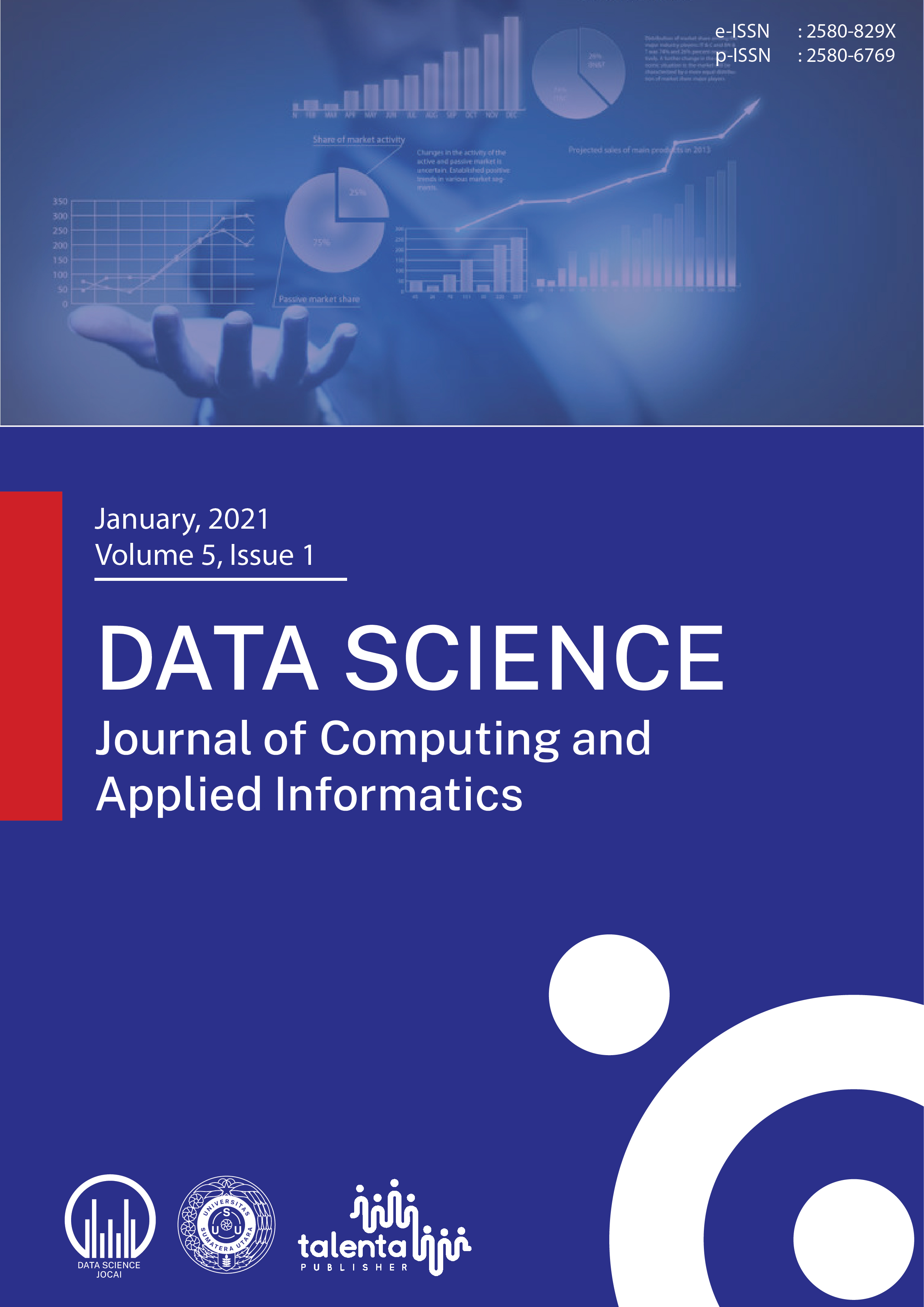Impact of Evaporation on the Performance of Ant Colony Optimization-Based Routing Protocols on the Wireless Sensor Network
DOI:
https://doi.org/10.32734/jocai.v5.i1-4103Keywords:
Wireless Sensor Network, Ant Colony Optimization, Evaporation, RoutingAbstract
Wireless Sensor Network (WSN) has the characteristics limited computing, memory and energy, so a routing protocol that supports WSN network performance is needed. Routing protocols based Ant Colony Optimization (ACO) are very suitable for use in WSN for routing data packets. In this report, we will try out several kinds of parameter values that bear on the pheromone evaporation (Ï) on the ACO algorithms applied to the WSN routing protocol with grid topology on the number of nodes variables in the WSN network. Where this can increase the number of delivery packets on a busy WSN network and each node transmits a packet continuously. From the results, the value of Ï 0.75 makes WSN performance on the grid topology with the number of nodes 12 and 30 very good in terms of the delivery packet, but with the number of nodes 70 the value of Ï 0.70 makes WSN performance better than the delivery packet side.
Downloads
References
S. Zhang, Z. He, and H. Yang, “Mobile agent routing algorithm in wireless sensor networks,†in Advances in Computer Science and Information Engineering, Springer, 2012, pp. 105–113.
S. Muthukarpagam, V. Niveditta, and S. Neduncheliyan, “Design issues, topology issues, quality of service support for wireless sensor networks: Survey and research challenges,†Int. J. Comput. Appl., vol. 1, no. 6, pp. 1–4, 2010.
T.-L. Lin, Y.-S. Chen, and H.-Y. Chang, “An ant colony optimization routing strategy for wireless sensor networks: A SDN-like perspective,†J Comput, vol. 28, no. 4, pp. 103–113, 2017.
N. K. Husna, “Development Of Automatic Traffic Light Based On Wireless Sensor Networks With Star Topologies,†JAICT, vol. 2, no. 2, p. 11, 2019.
A. Nayyar and R. Singh, “Performance analysis of ACO based routing protocols-EMCBR, AntChain, IACR, ACO-EAMRA for wireless sensor networks (WSNs),†J. Adv. Math. Comput. Sci., pp. 1–18, 2017.
A. Nayyar and R. Singh, “Simulation and performance comparison of ant colony optimization (ACO) routing protocol with AODV, DSDV, DSR routing protocols of wireless sensor networks using NS-2 simulator,†Am. J. Intell. Syst., vol. 7, no. 1, pp. 19–30, 2017.
P. Shunmugapriya, S. Kanmani, S. Devipriya, J. Archana, and J. Pushpa, “Investigation on the effects of ACO parameters for feature selection and classification,†in International Conference on Advances in Communication, Network, and Computing, 2012, pp. 136–145.
A. Ghaffari, “An energy efficient routing protocol for wireless sensor networks using A-star algorithm,†J. Appl. Res. Technol., vol. 12, no. 4, pp. 815–822, 2014.
G. Di Caro, F. Ducatelle, and L. M. Gambardella, “Swarm intelligence for routing in mobile ad hoc networks,†in Proceedings 2005 IEEE Swarm Intelligence Symposium, 2005. SIS 2005., 2005, pp. 76–83.
F. Ducatelle, “Adaptive routing in ad hoc wireless multi-hop networks,†Università della Svizzera italiana, 2007.
Downloads
Published
How to Cite
Issue
Section
License
Copyright (c) 2021 Data Science: Journal of Computing and Applied Informatics

This work is licensed under a Creative Commons Attribution-NonCommercial-NoDerivatives 4.0 International License.















